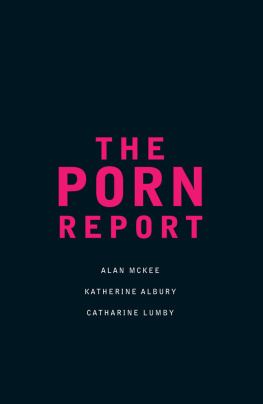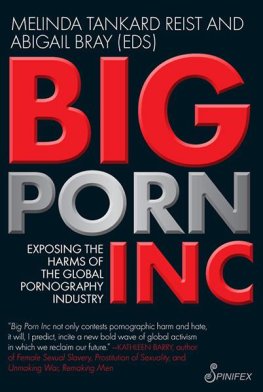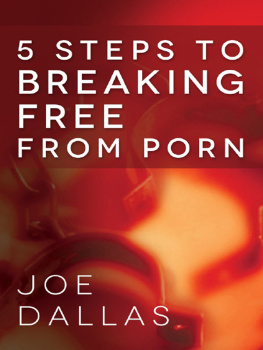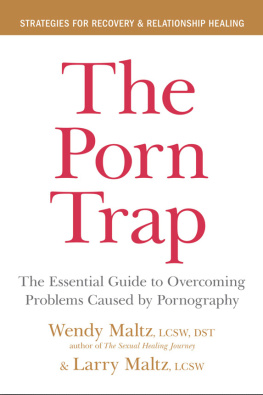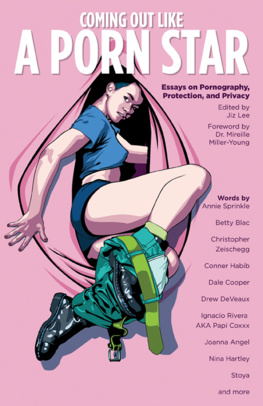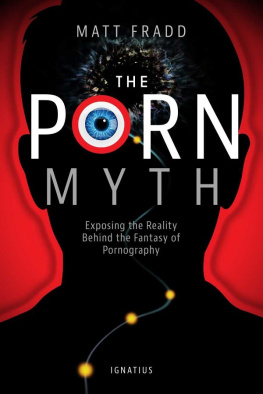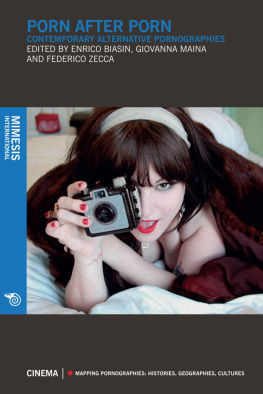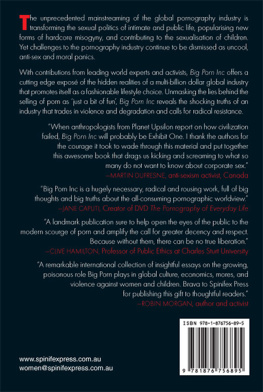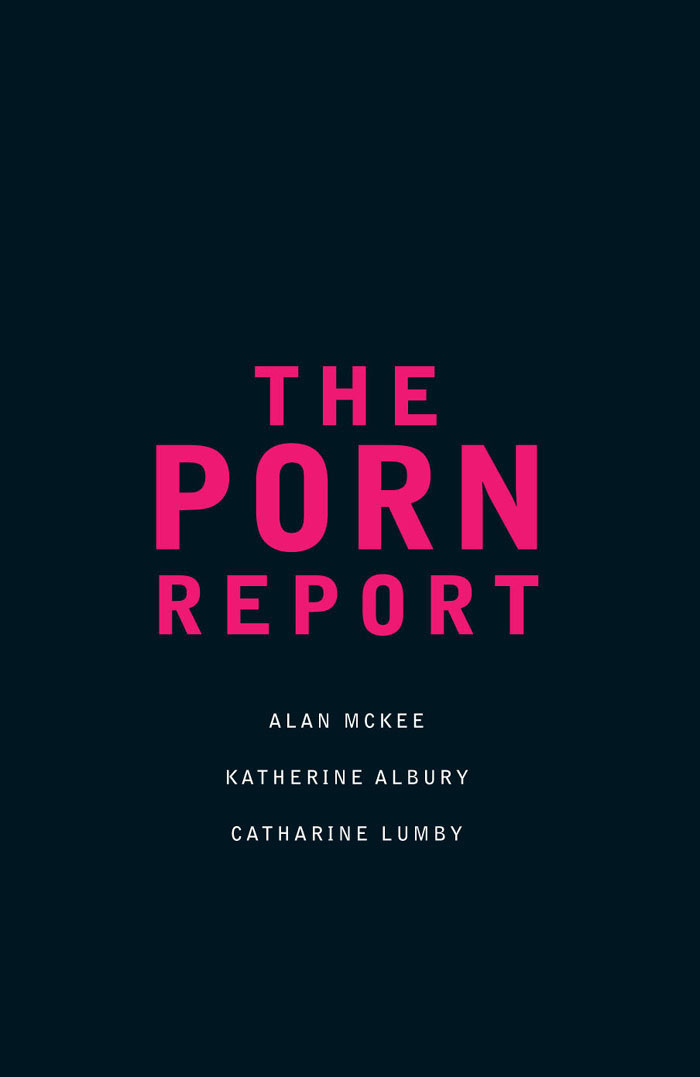The Porn Report
The Porn Report
Alan McKee,
Katherine Albury &
Catharine Lumby
Contents
Acknowledgements
Alan
Id like to thank all of the researchers who worked on this project. Without their hard work, enthusiasm and skill it would never have happened. Particular thanks are owed to Jenny Burton and Denise Durrington, the two project managers, who demonstrated great organisational abilities, leadership skills and big brains. Thank you also to Martin Chadwick, Victoria Creevey, Angela Greenshill, Lisa Kennedy and Andrew King. I am also extremely grateful to Jeremy Angelis, Mike Emmison and Jason Sternberg for support with the project. Stephen Cox in particular changed the nature of the research, for which my profound thanks. The research would have been much less colourful and human without the voices of the consumers that we interviewedthanks to everybody around the country who took the time to complete the survey or agreed to be interviewed by us. Their bravery and honesty is admirable. And thank you to our wonderful band of interviewers who recorded their voicesJason Bainbridge, Rosemary Cooper, Terry Evans, Clifton Evers, Anne Fawcett, Glen Fuller, Ryan Griffith, Cary Lee, Paul Levett, Nadia Mahjour, Pam Martin, Colin Parton, Kimba Scorpecci and Dion de Wild.
Thanks to my co-authors, Kath and Catharine, who inspire me and make me think that academics can do something worthwhile. And finally, to John Hartley, who is, I think, a genius.
This book is based on the findings of the Understanding Pornography in Australia research project, funded by the Australian Research Council.
Kath
For research assistance, thanks to Anne Fawcett, Katrina Fox, Fiona Giles, Rebecca Huntley, Anna North and Matthew Thompson.
Thanks to all the organisations and individuals that facilitated my research, particularly to those who invited me to present my work in progress: Carol Queen and Robert Lawrence at the Center for Sex and Culture, San Francisco; Gary Dowsett and colleagues at the HIV Center for Clinical and Behavioral Studies, Columbia University; the Australian Research Centre for Sex, Health and Culture; Juliet Richters and her colleagues at the National Centre for HIV Social Research, University of New South Wales; Gail Hawkes, John Scott, and their colleagues at the University of New England; the Australian Society of Sexuality Educators, Researchers and Therapists, New South Wales; Dr Gabrielle Morrissey; the Ideas at the Powerhouse Festival, Brisbane; the State Records Gallery, New South Wales; the This Is Not Art Festival, Newcastle; ABC Radio National; the departments of Critical and Cultural Studies and Media and Communications, Macquarie University; the Creative Tropical Industries Forum, Charles Darwin University; the organisers of the Revelling 05 conference; the Cultural Studies Association of Australasia; and Michael Flood. Thanks, too, to all the media outlets and community organisations that directly or indirectly assisted with promotion and recruitment, particularly: ABC Radio National and Triple J; Lizz Kopecny and Glenn Vassilos of bi.org.au; and Craig Donarski and Jackie McMillan of the Sydney Hellfire Club.
Special thanks to my friends and colleagues in the departments of Media and Communications, and Gender and Cultural Studies at the University of Sydney, and in the School of Media, Film and Theatre at the University of New South Wales.
I am extremely grateful for the openness of all our interviewees, and to all those (too many to name!) who generously offered research materials, and food for thought of various kinds throughout this project, especially my fellow panellists and crew members at ABC Televisions The Einstein Factor.
Extra special thanks, of course, to my family in Australia and the United States, and to Lamia Dabboussy, Clif Evers, Sean Goodwin, Dan Hirst, Linda Jaivin and Tobin Saunders for your friendship, support and love.
And last but not least, to my co-authors!
Catharine
Many thanks to the Australian Research Council who funded this project. I would also like to thank Anna North for her research assistance. Pornography is a contentious area of research and the support and advice of colleagues and friends has made navigating this difficult topic easier. For conversation and the occasional robust debate, I am grateful to Kate Crawford, Clifton Evers, Fiona Giles, Robert Hughes, Rebecca Huntley, Megan Le Masurier, Carrie Miller, Jane Mills, Frank Moorhouse, Richard Neville and Elspeth Probyn. Finally, and most importantly, Id like to thank Kath Albury and Alan McKee for being such intellectually and personally generous colleagues.
INTRODUCTION
Why Study Pornography?
When did you discover pornography? Catharines first brush with the stuff was in Year 5 when a group of schoolboys at the back of the bus started reading out passages from The Joy of Sex. The book may have been intended as an earnest hippy ode to the beauty of lovemaking, but the ten year olds on that bus thought it was pure, delightful filth. Kath was seven when she discovered one of her fathers Playboy magazines. She lived in a very bohemian feminist household so she wasnt fazed by the pictures of naked women. What really got her attention were the cartoons. Alan discovered an abandoned magazine in the woods behind his house when he was in his early teens. It was a heterosexual magazine, and his main reaction was disappointment that the women were naked but the men still had their clothes on.
Love it, hate it or just feel ambivalent about it, porn is something the majority of us have encountered before, often at a fairly young age. Pornography, as we know it, didnt arrive with the internet or the VCR, even though new technologies have certainly increased its availability and the ease with which it can be accessed. Passionate debates about the cultural, social and moral effects of pornography have a long history. These debates have once again become particularly heated in the wake of the internet, a medium that gives many people unprecedented access to pornography.
In March 2006, the Australian Labor Party announced that a Federal Labor government would introduce compulsory internet filtering to shield children from graphic pornography. Every site that was potentially pornographicincluding anything that presented sexually explicit words, or pictures with lots of skin in themwould supposedly be automatically filtered by every Australian computer.
Measures like this have been attempted or promised across the world, though with little success, except in states that exert totalitarian control over online media. In China, for instance, access to sites considered politically subversive or immoral is routinely blocked. The problem is that many pornographic sites are hosted overseas and are not easily regulated by national censorship regimes. Filtering software is improving and is undoubtedly a very useful tool for parents and educators who want to protect children from inappropriate material. But the reality is that, for the present at least, we live in a world where pornography is widely available. The authors of this book believe that we need to have an informed debate about its role in our society, and that means knowing more about whats in popular forms of pornography, who consumes it, how it affects their lives and how we can protect children from unwanted exposure to sexually explicit material.

